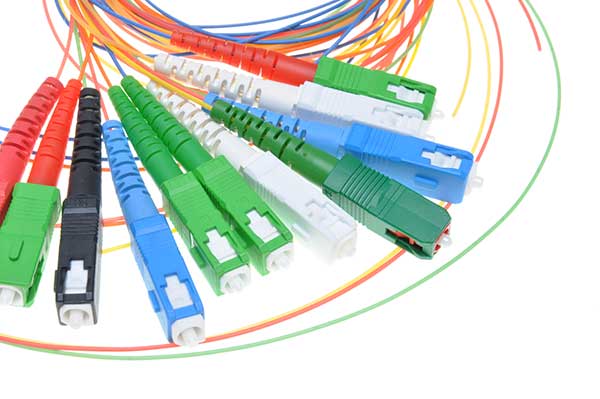A lot of people looking to get Fiber to their business are not sure if they need Single-mode or Multimode fiber. Today’s we are going to discuss the difference in simple language and hope this helps everyone make an appropriate decision for the choice for Fiber Cabling.
Single mode cables have a small diameter 9-micron core allowing one pathway of light while Multimode fiber cables have 2 different large diameter core sizes, 50 and 62.5 microns, allowing multiple pathways of light to pass through. 50-micron cables provide longer length distance and higher speeds than 62.5-micron cables. Single-mode cables have theoretically unlimited bandwidth, whereas multi-mode cables have limited bandwidth with 50-micron cables providing three times the bandwidth of 62.5-micron cables. Single mode cables are more suitable for long- distance applications, while multiple cables are better suited for short distance applications. These cables are further divided into OM ratings such as OM1, OM2, OM3 and OM4. These are iso standards to quantify the residual level of inner modal dispersion.
Single mode and multimode cables are available in both duplex and simplex options. Duplex fiber optic cables consist of two fibers, usually in a side by side style. They are used in applications that require simultaneous bidirectional data transfer, such as fiber switches, servers and modems. Simplex fiber optic cables consist of a single fiber, they’re used in applications that require one-way data transfer. Single-mode fiber optic cables are typically used on application spread out longer than a few miles such as telephone companies creating connections between switching offices. Multimode Fiber cables, on the other hand, can be used in most general fiber applications, such as connecting fiber optics to a desktop, adding segments to existing networks, on small applications, including alarm and security systems.



